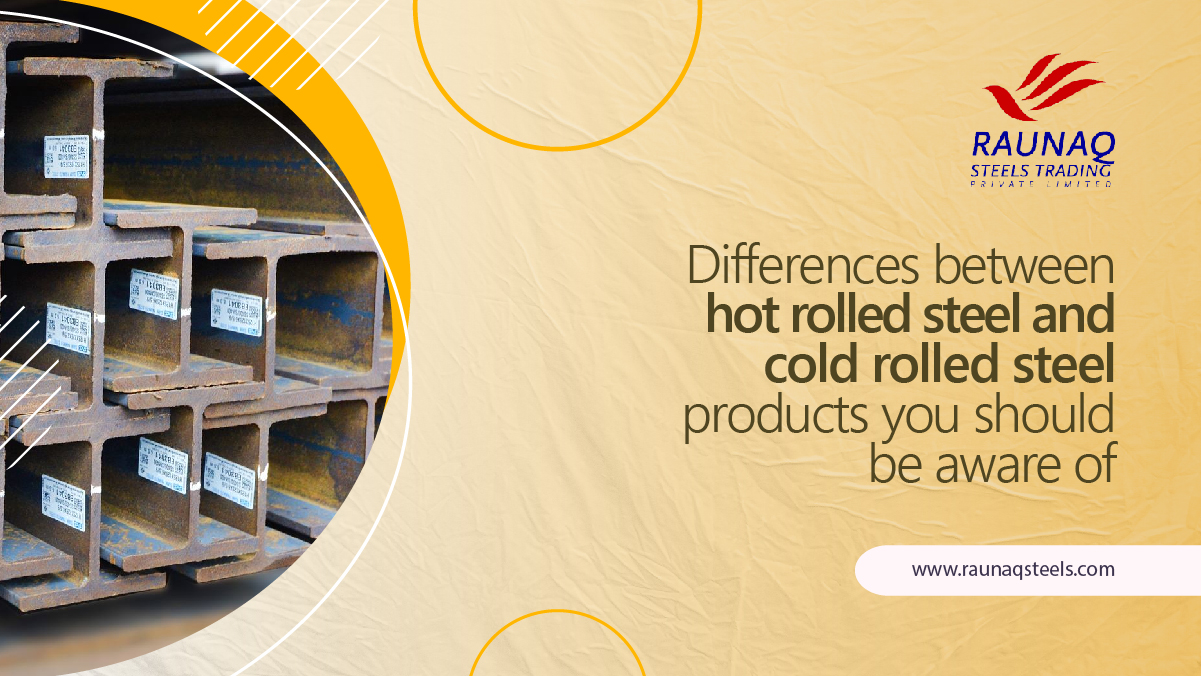
Differences Between Hot Rolled Steel and Cold Rolled Steel Products You Should Be Aware of
June 14, 2022
Steel products are known for their strength as well as for their versatility. From construction to manufacturing, steel finds its application across industries and the quality of steel plays a significant role in determining the quality of the products. There are many varieties and grades of steel available; being aware of the unique properties of each is essential. The hot rolled plates and cold rolled ones are in huge demand with each possessing a set of unique properties. During manufacturing, both kinds of steel undergo different rolling processes and that makes all the difference in their features. Here some of their core differences have been listed with the aim of helping the buyers develop a better understanding of these products to be able to make an informed decision.
Differences between hot rolled steel and cold rolled steel products-
The Processing:
The technique that is applied by the best steel companies in India during the metal processing makes the difference. So, what are the different rolling processes both these steel products have to undergo? Let’s find out.
The hot rolling process- In the hot rolling process, a heated billet is pre-processed and it is given the shape of a roll. Now during the processing the roll is pressed at a very high temperature above 1700° F, and thereby it exceeds the steel’s recrystallization temperature. The rollers are applied to the steel at a high speed to give it the right dimension. The application of high temperature basically makes it easier to shape the steel. However, once the steel is allowed to cool down it shrinks and it does not take place in a uniform manner therefore, no ideal shape can be achieved.
The cold rolling process- The cold rolling process is basically an extension of the hot rolling process. The hot rolled steel is processed at a high temperature, but in the cold rolling process the steel is cooled at the room temperature, then the metal is subjected to the ‘temper rolling’ process which enables the steel product to have better dimensional tolerances and also have better surface finish. However, the cold rolling process is expensive than the hot rolling process and most importantly this process also makes it possible to achieve different shapes and dimensions.
Features:
Due to the manufacturing process both hot rolled steel, and cold rolled steel sheet develop a unique set of specific features. Let’s find out more here.
Strength-
When it comes to strength the cold rolled steel has better strength that that of the hot rolled plates. Due to the low temperature at which the cold rolled steel is processed, it gets not only stronger but also harder than the hot rolled version. The cold rolling process enhances the metal’s resistance against deformation, and tension breaking reaches a higher level. In fact, the strength of the cold rolled steel is almost 20% higher than that of the hot rolled steel products. Due to being stronger the cold rolled steel products are ideal for the high-stress applications.
Ductility-
As far as ductility is concerned the cold rolled steel products are more ductile than the hot rolled steel products. Having high ductility means that the metal could be used for different applications. Even though being subjected to high stress, the cold rolled steel products would bend but will not break. The hot rolled steel does not have this flexibility therefore, for certain applications it cannot be used. The cold rolled steel being ductile is ideal for different applications, as it could easily be manipulated and shaped according to diverse requirements. To be precise the cold rolled steel is easier to work with.
Cost-
When the cost is concerned the hot rolled steel is comparatively cheaper than the cold rolled steel, reach out to the best steel companies in India to get fair pricing. The hot rolling process is not as extensive as the cold rolling process thereby, there are a fewer steps involved so the production cost is less. On the other hand the cold rolling process is much more advanced and with more steps being involved the process gets costly. Therefore, the cold rolled steel is more expensive than the hot rolled steel.
Surface properties-
When it comes to comparing surface properties, the cold rolled steel sheet has again an advantage over the hot rolled steel. The cold rolled steel does not shrink during the cooling stage therefore; it could be given different shapes. On the other hand, the hot rolled steel shrinks therefore, it could not be used where the precision of shapes is a requirement. The cold rolled steel has a smooth surface and free from rust, or, even scales. In the applications where aesthetics is important, cold rolled steel is used.
Application:
Both hot rolled and cold rolled steel products are used for different applications. Let’s check out what these are.
Hot rolled steel-
The hot rolled steel products are used for the following applications which do not require high level of tolerance, and precision.
- Agricultural equipment
- Construction
- Automobile parts
- Railway tracks
Cold rolled steel-
The cold rolled steel is used for applications where aesthetic appeal, high-tolerance, and better surface finish are required.
- Home appliances
- Metal Furniture
- Lighting fixtures
- Construction
The hot rolled plates and cold rolled steel products have some core differences in terms of processing, features, and application. The differences listed here would help one understand these two steel types better. However, one should only approach a reputed steel company to buy their steel products.